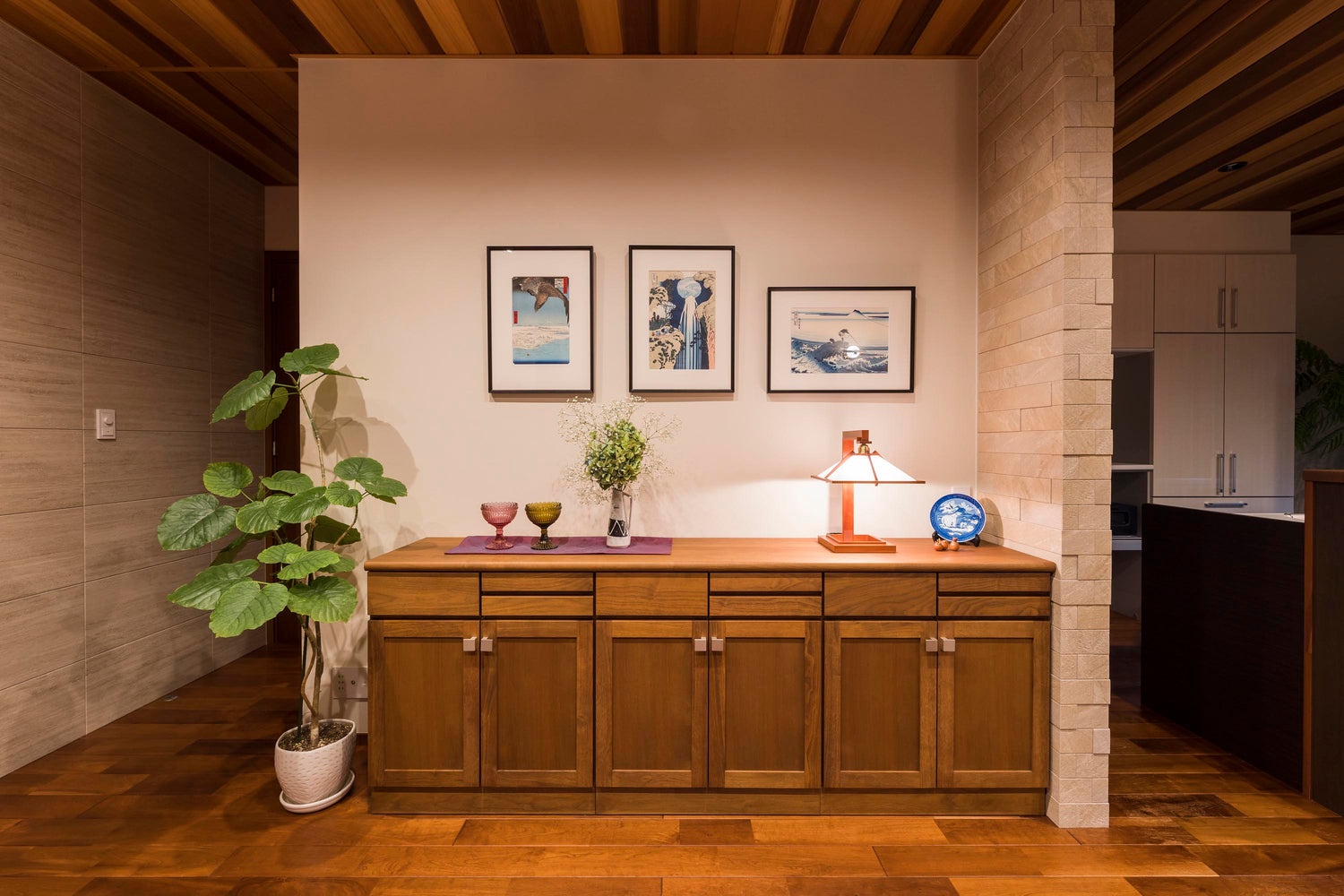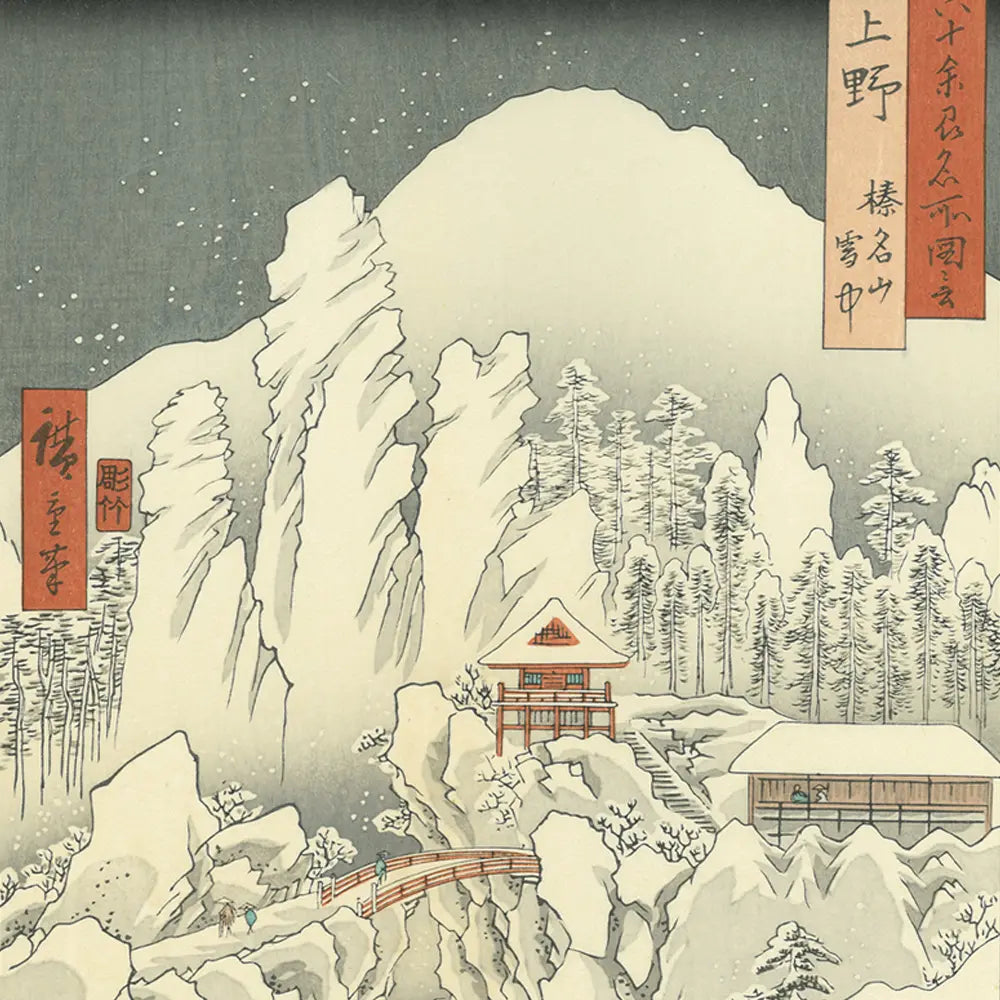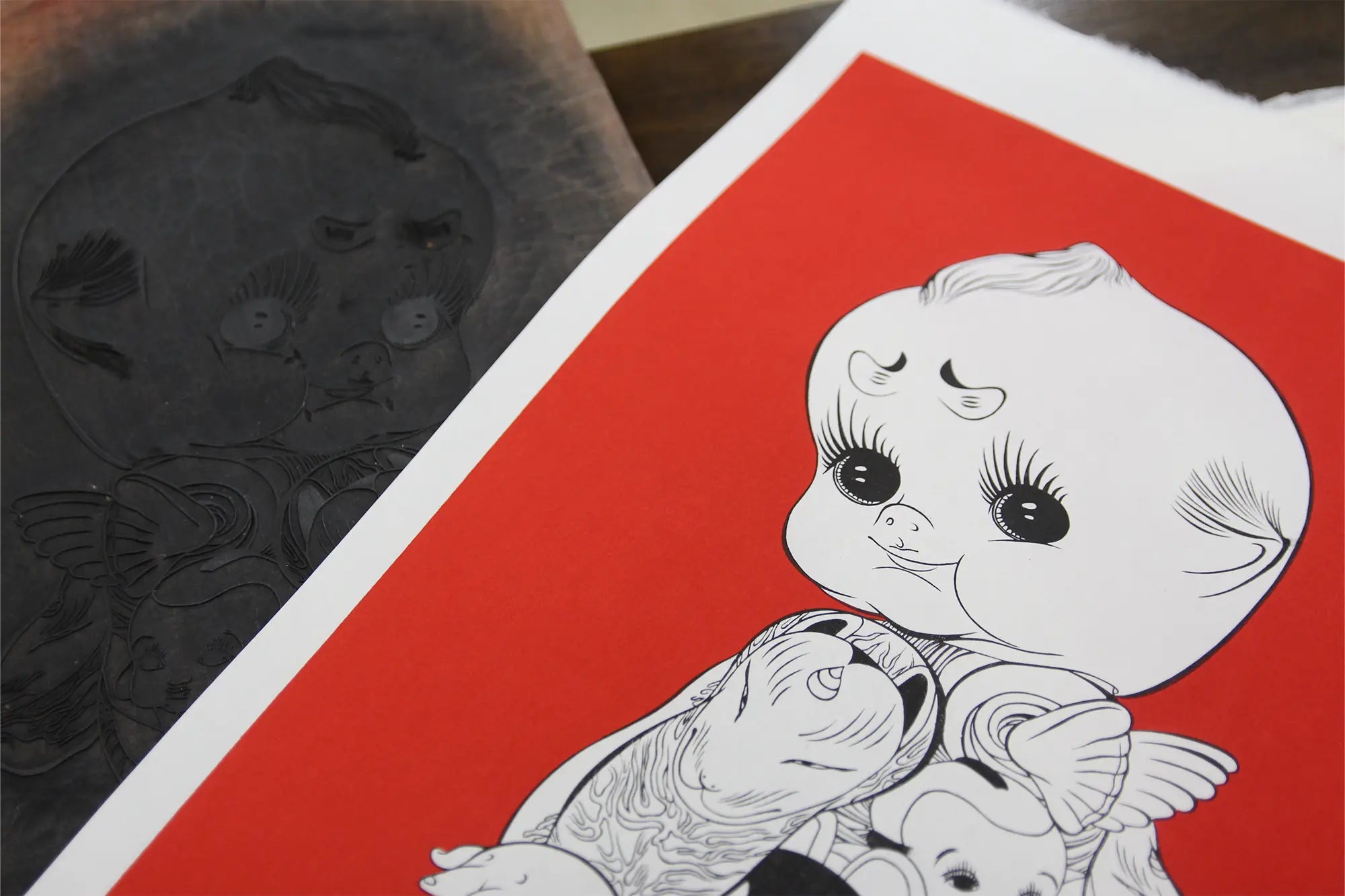
Mr. M, who we spoke to this time, works for a construction company and has just renovated his home. After reading a past customer interview article, he sent us photos of his lovely room decorated with Adachi's reproduction ukiyo-e prints. We had the opportunity to hear a lot from him about how he first encountered Adachi's ukiyo-e prints, how he enjoys them, and his carefully crafted interior. We will be delivering this article in two parts, Part 1 and Part 2.
 This time we interviewed Ms.
Ms. M lives with her family of four and her dog. Her hobbies are gardening, walking her dog, and visiting interior design shops, so you can see that she lives in a lovely home. When asked how she plans to enjoy ukiyo-e in the future, she said, "I would like to find an ukiyo-e that matches my dog's black and white spotted pattern." The Adachi staff is also currently thinking about what kind of ukiyo-e would suit her.
|
Feeling a connection with cherry blossoms, I was searching for pictures related to cherry blossoms.
-Please tell us how you first came to know about Adachi Woodblock Prints.
M-san: "I built my house 10 years ago and used black cherry wood (cherry wood from North America) for the interior. After that, I felt a connection with cherry blossoms because I planted wild cherry trees in the garden and my home address is "Sakuragaoka." So I started looking for pictures related to cherry blossoms. I think it was on the Adachi Woodblock Prints website, but I found "Cherry Blossoms and Mt. Fuji." I thought this was it, so I went to the showroom in Mejiro to see it in person and purchased it."

-Thank you for your continued patronage over the years.
M-san: "I treasure the New Year's card I received from Adachi Woodblock Prints, and I put it in a postcard-sized frame and hang it in a small space in my room."

--After you first bought "Cherry Blossoms and Mount Fuji," you then purchased three other ukiyo-e prints.
Ms. M: Yes, I bought Hiroshige's "Fukagawa Suzaki Jumantsubo" and Hokusai's "Kiso-ji no Oku Amida no Taki" and "Koshu Ishibanzawa". All three works are full of charm and highlights, and I like them all.
-In the photo you sent us, the three works you mentioned earlier are hanging on the same wall. Was it your plan to display the three works side by side from the beginning?

M-san: "No, before the renovation, these three works were displayed on completely separate walls. The photos I've sent you this time were taken when we renovated our house last year, to be published on the website of the renovation company. When I put them all together on the same wall, they ended up looking much more balanced than I expected, so I decided on that."
Discovering the charm of indigo at "Koshu Ishibanzawa"
Of these three works, the one he is most attached to is Hokusai's "Kōshū Ishibanzawa."
Ms. M: "I've always liked one-tone coordination, and my first impression was that I was drawn to the fact that it was painted using only light and dark shades of blue. This painting also sparked my interest in the indigo culture of Prussian blue, Belo indigo, Hiroshige blue, Hokusai blue, and Japan blue. This is a painting that I'm very attached to, as it allowed me to rediscover the charm of the color blue (indigo) ."
Popular with interior design professionals
Due to the influence of the taiga drama "Seiten wo Tsuke" (broadcast in 2021), the color indigo has been gaining more and more attention this year. In M's home, this work prompted her to incorporate indigo into the interior design of her home other than ukiyo-e.
M-san: "This piece made me fall in love with indigo, so when I renovated, I installed a deep indigo rug in the entrance.

In addition, the carpet shop where we purchased the rug suggested an indigo carpet, as they thought the ukiyo-e hanging on the wall was beautiful. The carpet, like "Koshu Ishibanzawa," is expressed using only light and dark shades of indigo, and has a very beautiful design."

Combined with the room's interior, Koshu Ishibanzawa has apparently been very well received by visitors to Mr. M's home.
M-san: "It was well received by the interior coordinator at the renovation company, and I think the most appealing thing about it is that it is expressed using only light and dark shades of blue ."
The indigo used in Hokusai's ukiyo-e prints, "Bero Ai" (Prussian blue), which M mentioned, is a chemical pigment imported from overseas during the Edo period. Its vivid blue color, different from the indigo used in Japan until then, is said to have instantly become popular. Due to its popularity, works called "ai-zuri-e", which are expressed only in shades of indigo, appeared, and there are about 10 indigo-zuri-e works in Hokusai's masterpiece "Thirty-six Views of Mount Fuji", including "Kōshū Ishibanzawa".
I was reminded that the beauty of Vero indigo, which captivated people in the Edo period, continues to fascinate people in any era.
Ms. M also shared an episode where she said, "My second son, who is a junior high school student, started borrowing ukiyo-e books from the library after learning about 'Thirty-six Views of Mount Fuji' in his textbook." Perhaps the fact that she has ukiyo-e hanging in her home also has an influence on him.
Longing for a house designed by Frank Lloyd Wright
Next, we asked her about her home, which she renovated last year. The photos she sent us show her attention to detail in every corner of the room, and they have been a topic of conversation among the staff at Adachi Woodblock Prints.

-If you don't mind, could you tell us about the layout of your home?
M-san: "It's a two-storey house. The house is compact overall, but we were conscious of the concept of making the space open and airy. Also, from the start, we envisioned a space that would look good with the mid-century design furniture we had, so we used materials and colours that had a classic, traditional feel . It's easy to understand if you think of it as a house that's not just new, but also vintage, like a pair of well-worn jeans."
-This is truly a home full of attention to detail.
Mr. M: "I like mid-century style architecture like those designed by Frank Lloyd Wright, and I've always wanted to build a house like the one in the movie "A Single Man." Of course, I can't build a house as grand as the one in the movie, but I want to get as close as possible, so in this renovation of my house, I'm aiming to follow Wright's architectural theme of "integrating nature and architecture ."
Frank Lloyd Wright was a world-renowned architect active in the 20th century. Eight of his buildings are registered as World Heritage Sites, and he is also known for designing the Imperial Hotel in Japan. Even today, there are many fans of the lighting fixtures designed by Wright, including Ms. M, who owns three of them in her own home.

Wright was also an avid collector of ukiyo-e prints, and there is a theory that they had a strong influence on his style .
Mr. M was also aware of this, and seemed to enjoy the combination of lighting and ukiyo-e, taking this background into account.
In the next issue, we will ask M-san in detail about what he pays attention to when displaying ukiyo-e and other artworks, and about his unique way of enjoying ukiyo-e. M-san has a deep knowledge of interior design, and his talk was full of useful tips. Please look forward to the second part. ( Click here for the second article >> )



